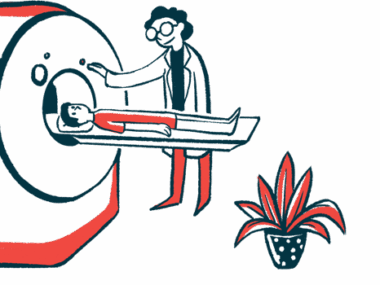Nexviadyme switch brings motor function gains for IOPD children
Next-gen therapy was designed to improve on Myozyme's performance
Written by |

Switching from Myozyme (alglucosidase alfa) to Nexviadyme (avalglucosidase alfa) led to gains in motor function and laboratory markers for four children with infantile-onset Pompe disease (IOPD) who took part in a compassionate use program in Italy.
One child who’d had persistent heart disease on Myozyme also saw heart health improvements after switching to Nexviadyme.
“Our data, although limited to [four] patients, represents the first ‘real-world’ experience in Italy of the use of [Nexviadyme] in patients with IOPD,” the scientists wrote.
The four cases were described in Molecular Genetics and Metabolism Reports in a paper titled, “Avalglucosidase alfa in infantile-onset Pompe disease: A snapshot of real-world experience in Italy.”
Pompe disease is caused by mutations in the gene that encodes acid alpha-glucosidase (GAA). Without a functioning version of this enzyme, the sugar molecule glycogen builds up to toxic levels in muscle cells, causing damage that drives disease symptoms. IOPD, the most severe form of Pompe disease, is marked by muscle weakness and heart disease that develop during the first year of life.
Both Myozyme and Nexviadyme deliver a functional version of GAA to the body’s cells, facilitating toxic glycogen clearance to slow the disease’s progression. Myozyme, marketed as Lumizyme in the U.S., was the first treatment for Pompe disease to become widely approved. Nexviadyme, sold as Nexviazyme in the U.S., is a next-generation treatment that was designed to be better at getting the enzyme into muscle cells.
Both therapies are approved in Europe to treat IOPD, though, Nexviazyme is only authorized for the late-onset form of Pompe disease in the U.S. Both were developed by Sanofi, which wasn’t involved with this study.
Gains after switching to Nexviadyme
Scientists in Italy reported the cases of four children diagnosed with IOPD in the first months of life and started on Myozyme soon after at the recommended dose of 20 mg/kg. The dose was doubled in three children to better control the disease.
At their diagnosis, all four children showed hypertrophic cardiomyopathy, a form of heart enlargement typical of IOPD-related heart disease. Myozyme was effective for managing this problem in three, but the fourth had persistent heart disease despite treatment. All four showed low muscle tone and motor complications even with Myozyme treatment, and three had signs of liver damage.
After several years taking Myozyme, the four children switched to Nexviadyme, at 40 mg/kg. No notable safety issues associated with switching were reported, even in the two children who had antibodies against GAA, which can increase the risk of treatment-related complications.
All four children showed gains in motor function in the months after switching. For example, in the two children who were able to walk while taking Myozyme, the distance they could walk in six minutes, which is a common measure of walking ability, increased notably after switching. The two nonambulatory patients also showed improvements, such as better coordination with the arms and the ability to grasp objects.
The one child who’d had persistent hypertrophic cardiomyopathy despite Myozyme treatment showed signs of heart disease reduction with Nexviadyme.
Levels of creatine kinase, a marker of muscle damage, decreased significantly after switching, lab tests showed. The switch also led to decreases in markers of liver damage.
“Our findings suggest a significant positive effect of [Nexviadyme], given that a constant and rapid decrease in biomarkers was observed and motor performances appeared to increase,” wrote the researchers, who noted they reported on only a few patients, meaning more research is needed.






